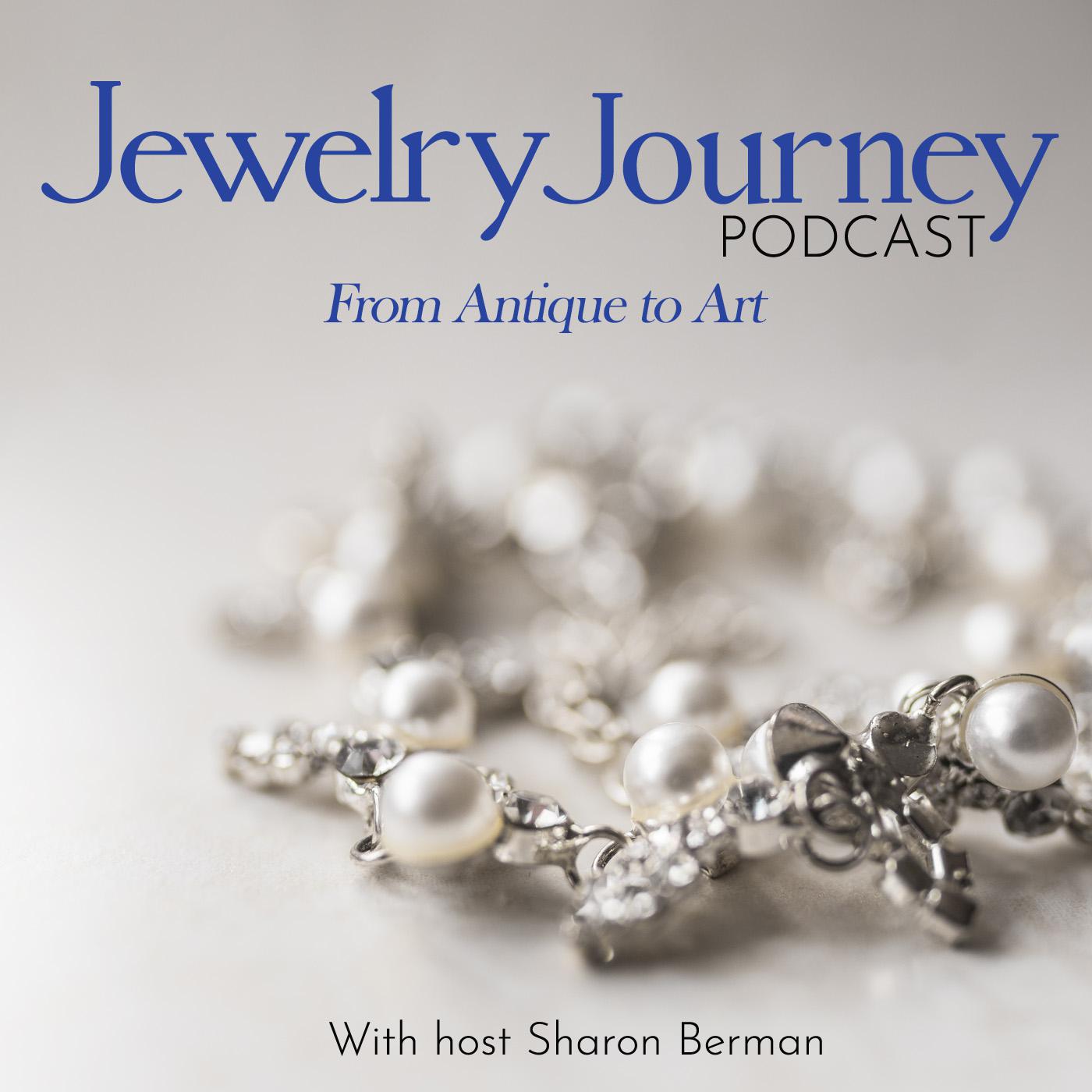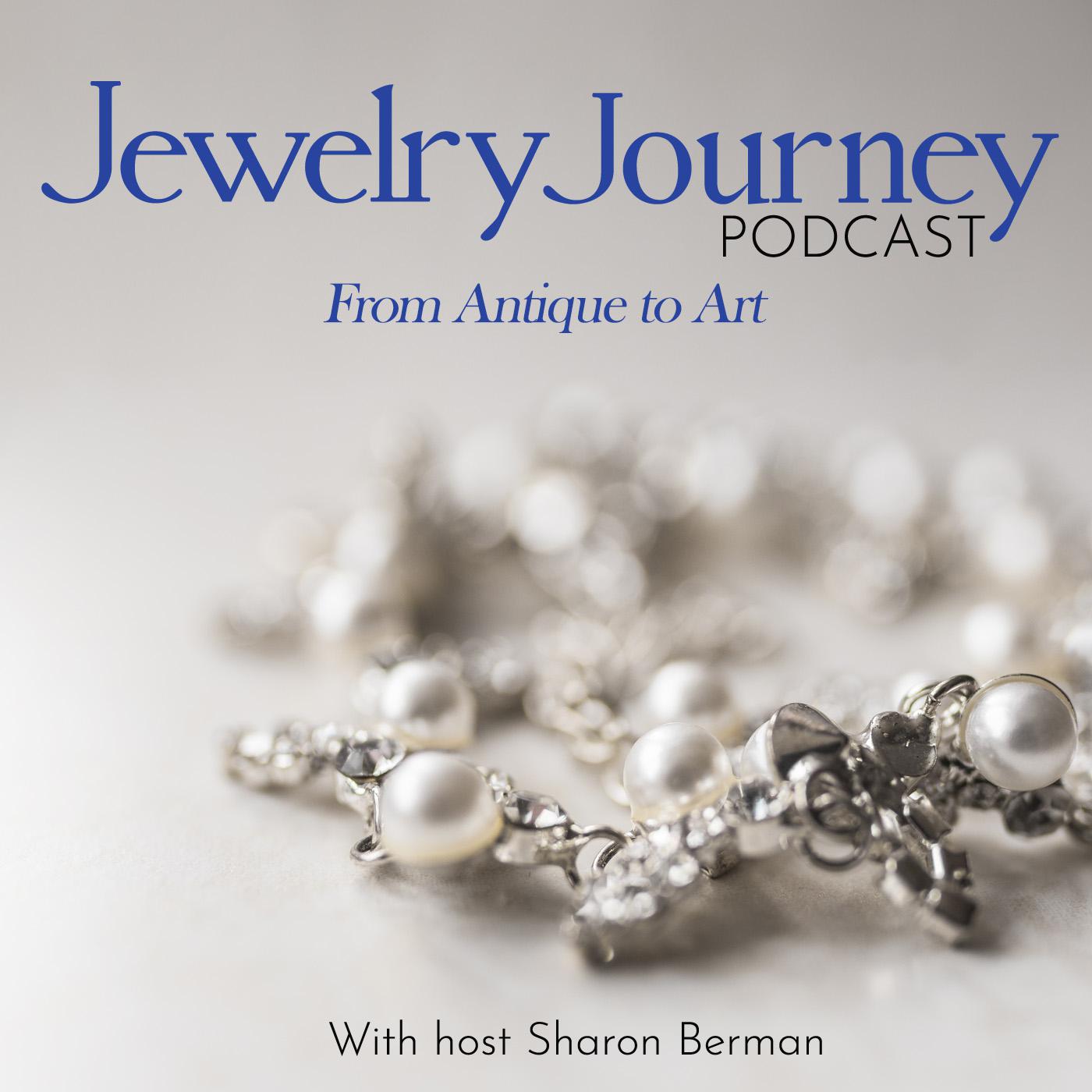Episode 215 Part 2: The Freedom of Art Jewelry with Gallerist Ilona Schwippel
Description
What you’ll learn in this episode:
- How studying and apprenticing abroad helped Ilona push the limits of her work
- How objects carry memories, and why that can influence someone’s desire to buy a vintage piece
- Why the most important thing a gallerist can do is choose pieces that resonate with them
- How art jewelry galleries create a channel of communication from artist to wearer to observer
- Why jewelry artists have more freedom that other types of artists
About Ilona Schwippel
Ilona Schwippel has run the gallery Viceversa, in Lausanne, Switzerland, with her husband Christian Balmer for 20 years. She holds a bachelor in product design, jewelry and accessories from the High School of Arts and Design (HEAD) in Geneva and a diploma in luxury creations and artistic crafts from the University of Geneva. Since 2017, Ilona has lectured at the University of Applied Science, in Lucerne, in the XS Schmuck department.
Additional Resources:
Photos Available on TheJewelryJourney.com
Transcript
Gallerists have a unique position in the jewelry world as the connectors between artist and wearer—and Ilona Schwippel holds sacred this responsibility. As co-owner of jewelry gallery Viceversa in Lausanne, Switzerland, she is always looking for the pieces that resonate with her and her clients. She joined the Jewelry Journey Podcast to talk about why jewelry carries the memories of its previous owners; why jewelry gives artists more freedom than any other medium; and how giving context to a piece can change a customer’s perception of it—for better or worse. Read the episode transcript here.
Sharon: Hello, everyone. Welcome to the Jewelry Journey Podcast. This is the second part of a two-part episode. If you haven’t heard part one, please head to TheJewelryJourney.com.
I went on Art Jewelry Forum’s trip to Switzerland to find Swiss jewelers that I didn’t know about. Art Jewelry Forum has an international trip every year, and they’re usually very interesting and very good. There I met Ilona Schwippel and her partner, Christian, who are owners of the gallery Viceversa. Welcome back.
If you see somebody who is interested and keeps looking at the piece, they keep coming back and looking at it, let’s say, do you then explain what the artist was trying to do?
Ilona: If I have the chance, which I think is great and I really appreciate, I tell him the first time, or I tell that person my idea and the context of the piece at the very beginning. It depends on the person sometimes, how open they are at the moment to see what kind of discussion, what kind of dialogue we can have, whether the person wants to hear it or not. This is always very unpredictable.
Sharon: Do you think art jewelry tells a deeper story than other kinds of jewelry?
Ilona: I think so. Yes, absolutely. I also think that a piece of contemporary jewelry tells a very different story to the observer once its worn. It’s a different kind of communication.
Sharon: It’s interesting. It’s probably true that once it’s worn, it tells a different story. Do you concentrate on certain artists? Do they have to be known? Are they up-and-comers? Any particular kind of artist?
Ilona: We have both. Next spring, for example, we will prepare an exhibition with Karl Fritsch. We’ve been working with him for many, many years. Maybe it’s the third or fourth solo exhibition that we’ve done with him. It’s always incredible how he continues to surprise us by only making rings. This is really incredible.
Sharon: Karl Fritsch?
Ilona: Karl Fritsch. For instance, sometimes he works with already existing jewelry, and he interferes; he changes the piece in my eyes. He doesn’t only change the aspect of the piece by enhancing it or by improving the design in a humoristic way, the way they improve the design of very classical pieces with fantastic design. Some of them have just been turning the piece into something else, and they said it was like improving the piece.
With Karl Fritsch, I think he is somewhere else. What I think is really interesting and very touching is that he changes it. For example, he takes an existing ring—each ring has a story. Each ring has its pedigree in terms of ownership. Sometimes you know; sometimes you don’t. Some people want to know; some people absolutely don’t want to know. What I think is interesting in his work is he takes this ancient piece, for example, and he changes the path of this ring. It doesn’t continue its way of living from owner to owner in a straight way. He takes a very sharp, radical turn. All of a sudden, it’s not only the piece that changes; it’s many things. The definition of the owner changes. I think that’s a very interesting part of his work.
Sharon: I’m surprised to hear people don’t want to hear what it was originally and what it means today. Why wouldn’t people want to know? Do you have any idea?
Ilona: Maybe they’re just more comfortable with something unknown than to know the stories. They would like to wear the piece, but they don’t want to carry the story of the piece or the story of the ancient owner with them. I think there is a very strong relationship between the owner and jewelry. Some pieces are really marked by the story of the ancient owner. It’s something personal.
There’s this German-Vietnamese philosopher who is talking about objects. They are a souvenir of people, of situations. That’s where he says it’s a dramatic difference between data and tangible objects. I think objects really have the capacity to carry on memories, and I can understand that not everybody is comfortable with that. I think this is an incredible quality of jewelry.
Sharon: If somebody comes to you and they want to exhibit or have their pieces in the gallery, does it matter to you if nobody has ever heard of them if you like the piece?
Ilona: If you like the work, yes. The distinction between pieces of work—as a gallery, we like to build up a long-term relationship with the artists. We love following the work, seeing the evolution of the artist and seeing the new work in relation to the pieces that were there before. If you see only one piece, it’s difficult to read, and it’s difficult to talk about the universe. I think it’s always exciting and important to see the universe, to have a body of work. Not just single pieces, but a body of work that tells a story. Then, if the person is known or unknown, it doesn’t matter. It’s about the quality and the content of this body of work.
Sharon: So, if they want to exhibit in your gallery but they only bring one work or one piece, you tell them to come back and show four or five so you get the connection.
Ilona: Yeah, and it’s also to know about the artist’s aim, about the content of the pieces, to feel the intention of the artist, why he or she did these pieces. Why do these pieces exist? Why was it important to create them? Why do they have to exist?
Sharon: Has it changed your mind when they bring one piece and you think, “Oh, well, that’s not so great,” but then they bring four or five and it’s the connection you see?
Ilona: Yes, absolutely. You can really see a story and also see it more in depth. With one piece, it’s more difficult to see the depth of the intention. If it’s only one piece, it’s less evident, maybe.
Sharon: You operate the gallery with your husband. Do you have a division of labor? Do you look at the pieces and he writes the catalogue?
Ilona: A lot of things we do together. This gallery is something really personal. It’s also incredible that each gallery you visit is so different from the other. It reflects the passion of each gallerist. I think it’s important that Christian and I work together. There are many questions we have to discuss, to talk about the artist, about the pieces and the exhibitions we would like to build up. Inside, we do some tasks separately for sure, but a lot of decisions we have to make together. It’s very enriching to have discussions about artists’ work that we d
























